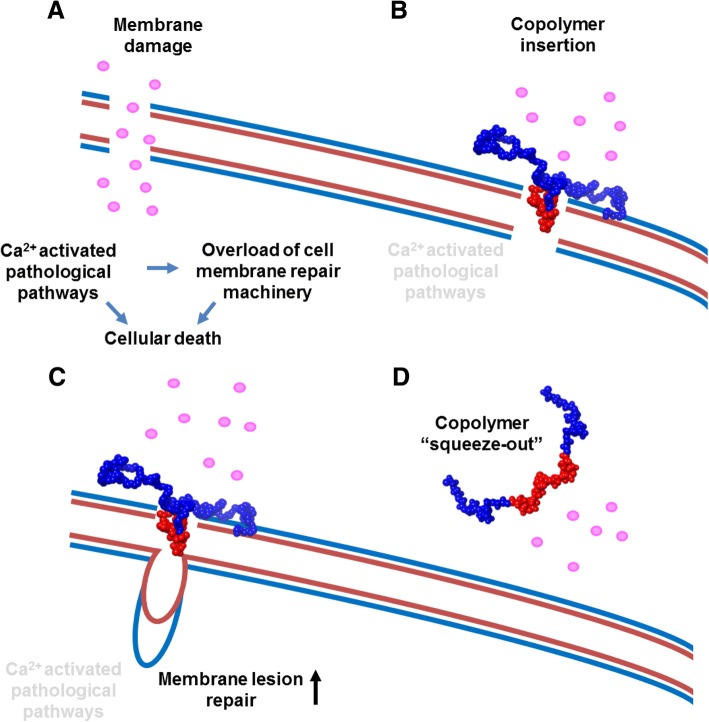Fig. 3.
Model of copolymer-based membrane stabilization. a In DMD, susceptibility to sarcolemmal damage from lengthening muscle contraction renders the muscle cell membrane leaky to extracellular Ca2+ (pink circles). Subsequent intracellular Ca2+ overload leads to activation of pathological cellular pathways. Further membrane damage overloads the repair capacity of endogenous cell membrane repair mechanisms and ultimately leads to cell death. b Copolymer insertion driven by hydrophobic interactions (red PPO block of the copolymer with the hydrophobic part of the membrane that is now exposed due to instability). Membrane stabilization prevents pathological Ca2+ entry into the cell and prevents activation of cellular death pathways. c While the copolymer stabilizes the membrane and prevents further damage, intrinsic cell membrane repair mechanisms can repair lesions at damaged sites [215]. d Once the membrane integrity is restored, the copolymer membrane stabilizer is “squeezed out” of the membrane. Here, the membrane is resealed, its lipid packing density is restored, and its hydrophobic portion is now enclosed [159, 216]

